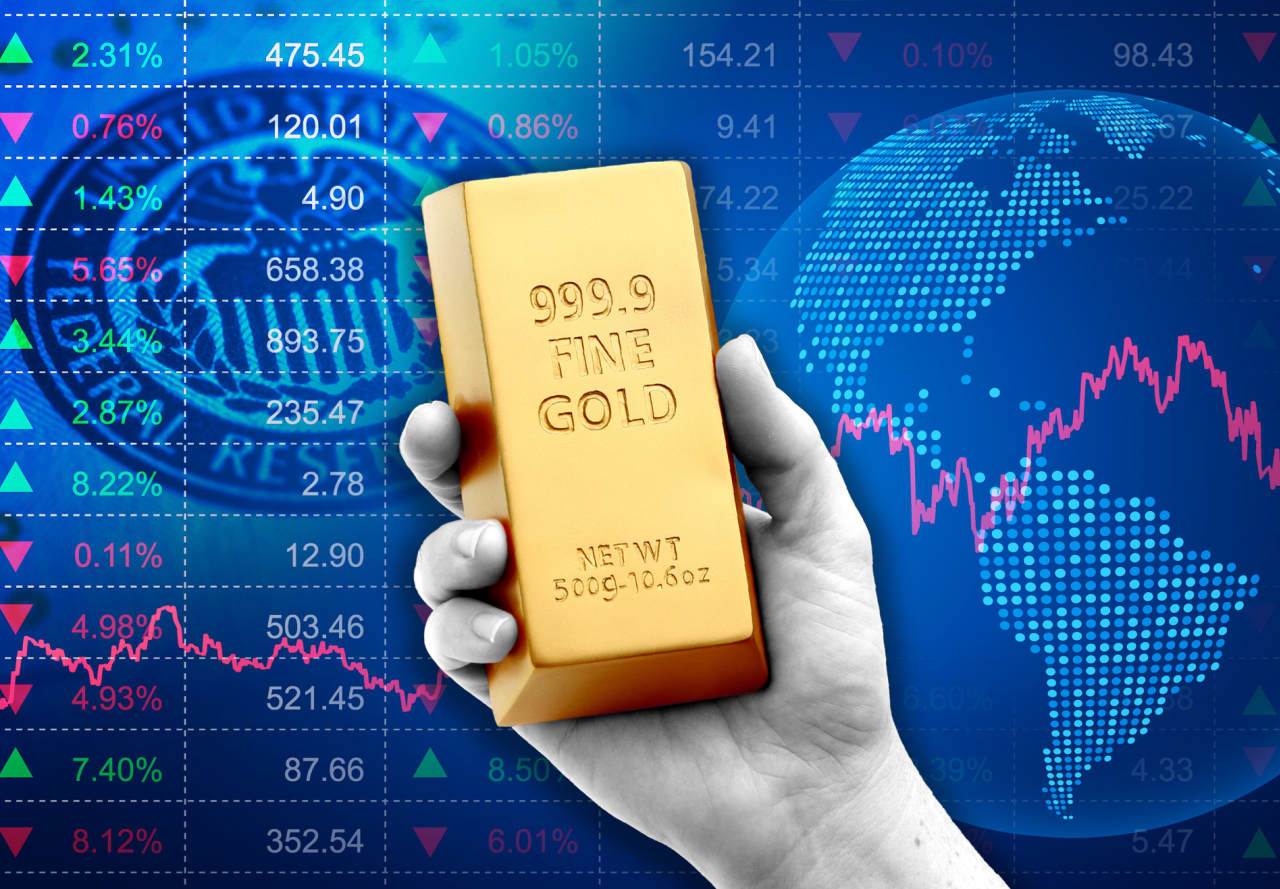Why Trump’s Challenge to Fed’s Independence May Make Gold the ‘Safe Haven of Choice’ for Investors
Washington, D.C. – August 27, 2025
President Donald Trump’s escalating efforts to undermine the Federal Reserve’s independence have ignited fresh concerns among investors, potentially positioning gold as the premier safe-haven asset amid fears of economic instability. The latest flashpoint came on August 26, when Trump moved to dismiss Fed Governor Lisa Cook, citing unproven allegations of mortgage fraud. This bold action, which Cook has vowed to challenge in court as “illegal,” has amplified worries about political interference in monetary policy, eroding confidence in the U.S. dollar and Treasury bonds while driving demand for gold as a reliable store of value.
The Federal Reserve responded swiftly, issuing a statement defending its structural safeguards, including “long tenures and removal protections” for governors, which it described as essential for data-driven decisions free from political pressure. The central bank pledged to abide by any court ruling but stopped short of directly addressing the legality of Trump’s move. This episode echoes Trump’s first-term criticisms of Fed Chair Jerome Powell, whom he has repeatedly accused of hindering growth through high interest rates. Analysts warn that such interference could lead to unwise policy choices, higher inflation, and increased market volatility, much like historical cases in Turkey and Argentina where central bank autonomy was compromised.
The Mechanics of Eroding Fed Independence
Central bank independence is a cornerstone of modern economies, allowing institutions like the Fed to prioritize long-term stability over short-term political gains. Trump’s actions threaten this by injecting executive influence into rate decisions, potentially forcing premature rate cuts to boost growth at the expense of inflation control. With the Fed already signaling a possible 25-basis-point cut at its September meeting amid rising labor market risks and persistent inflation, markets now price in an 80% chance of easing. However, political meddling could accelerate this, leading to “fiscal dominance” where government spending dictates policy, weakening the dollar’s global reserve status.
The immediate market reaction was telling: Long-dated Treasury yields surged as investors dumped bonds, short-term yields fell, the U.S. Dollar Index (DXY) weakened by 0.05% to 98.21, and gold rallied toward $3,350 per ounce—a two-week high—fueled by safe-haven buying. Gold’s inverse correlation with the dollar and Treasuries makes it particularly attractive; as fiat currency credibility wanes, the non-yielding metal shines as a hedge against devaluation and uncertainty.
Gold’s Appeal in Times of Uncertainty
Gold has long been viewed as a safe-haven asset, thriving during geopolitical tensions, recessions, and inflationary pressures. In this context, Trump’s Fed challenge exacerbates multiple risks: tariff-induced trade wars that could spark stagflation (higher inflation with lower growth), a weakening dollar (its global share already down to 46% in 2025), and central bank diversification away from U.S. assets. Central banks, led by China’s People’s Bank of China (PBoC), added a record 166 tons of gold in Q2 2025, pushing gold’s share of global reserves above 20%—surpassing the euro—for the first time. This trend, accelerated by geopolitical fragmentation and sanctions fears, underscores gold’s role as a “neutral, stable reserve asset” immune to political whims.
Hedge funds have piled in, with speculative net-long positions in COMEX gold futures hitting 170,868 contracts—the highest in 16 weeks—reflecting bets on stagflation and governance risks. J.P. Morgan forecasts gold reaching $3,675 per ounce by Q4 2025, supported by dovish Fed signals and ongoing central bank demand. Even as stocks rose modestly on August 26, the muted bond market reaction hints at deeper, unrealized worries about long-term Fed credibility, potentially sending more capital to gold ETFs like SPDR Gold Shares (GLD) or miners via VanEck Gold Miners ETF (GDX).
| Factor | Impact on Gold |
|---|---|
| Fed Independence Erosion | Undermines dollar confidence; gold surges as alternative reserve (e.g., +0.84% to $3,342 on Aug. 20). |
| Dollar Weakness | Inverse correlation boosts gold; DXY down amid political turmoil. |
| Inflation & Stagflation Risks | Tariffs and policy interference fuel price pressures; gold hedges effectively (historical 150% rise during 2007-2008 crisis). |
| Central Bank Buying | Record purchases (1,000 tons projected for 2025) drive prices; BRICS diversification accelerates. |
| Geopolitical Tensions | Ongoing wars (Ukraine, Middle East) compound uncertainty; gold as non-sanctionable asset. |
Broader Implications and Investor Strategies
While traditional safe havens like Treasurys and the dollar may falter— with the dollar’s safe-haven status questioned amid current account deficits and decoupling from risk assets—gold’s track record remains unmatched. During Trump’s first term, gold soared to $2,000 amid trade wars; now, with prices already above $3,000 and targeting $3,500-$4,000, analysts urge immediate exposure via physical gold, ETFs, or futures to counter dollar fragility.
Risks persist: A court ruling upholding Cook’s protections or Fed rate hikes could temporarily stabilize markets and pressure gold. Yet, with Trump’s tariff threats (e.g., 25% on Mexico and Canada) looming and global growth concerns mounting, the narrative favors gold. As one X user noted, “Trump’s push against Fed independence could erode trust in the dollar and Treasuries. If confidence wanes, gold may emerge as a preferred safe haven.” Investors, from hedge funds to central banks, appear to agree, betting on gold to navigate the turbulence of a politically charged economic landscape.
